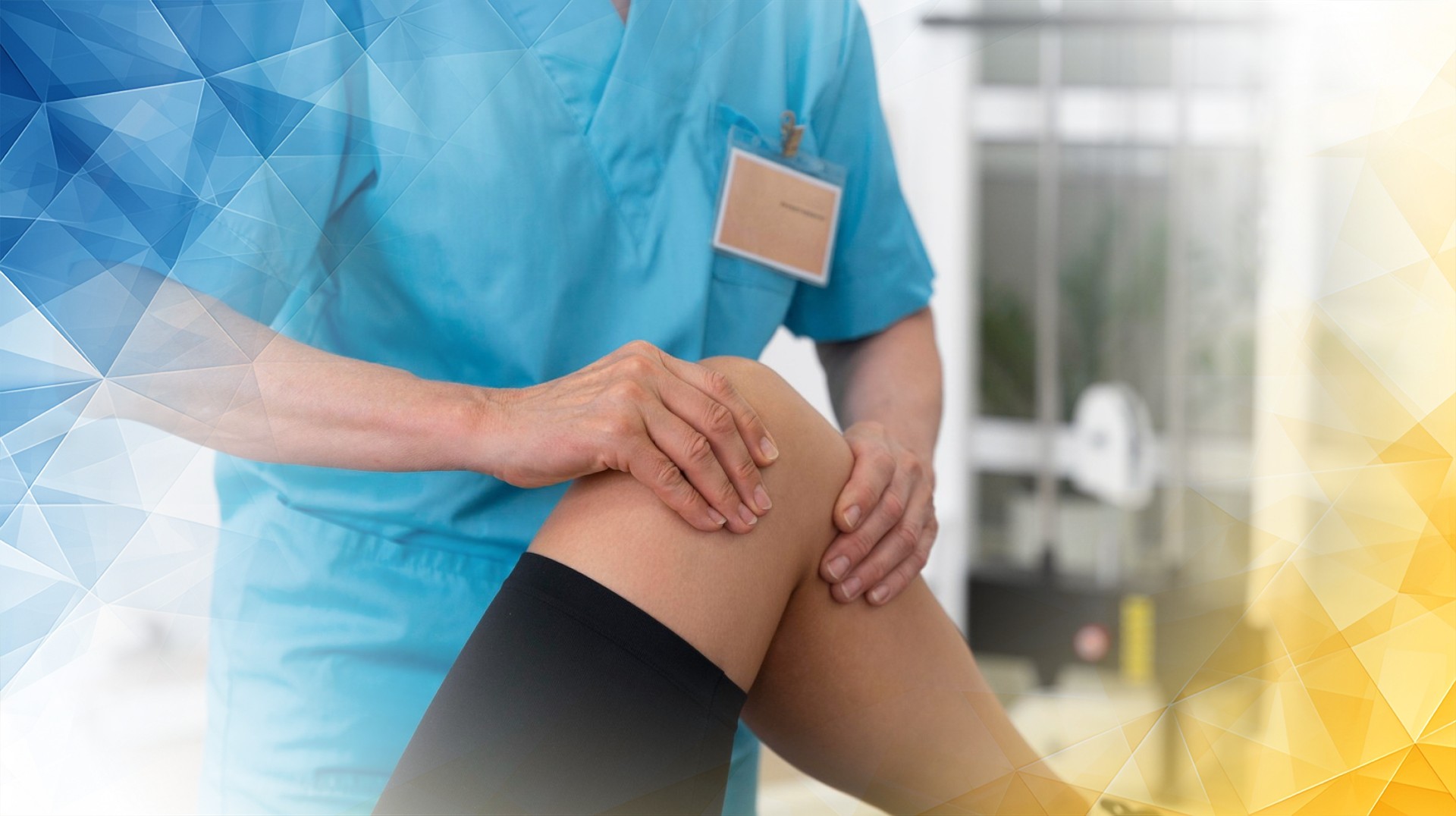



If you’ve ever watched intense sports like football, basketball, or rugby, you know how quickly players change direction or stop on a dime. These agile moves put enormous strain on the knee—especially on the ACL, the key ligament keeping the knee stable.
When the ACL tears , it’s more than just a painful injury; it can sideline an athlete and impact their future in the sport. Ben Vansumeren’s experience is a real-life reminder of how quickly such injuries can happen and why proper prevention and rehabilitation are so important.
Research has shown that not all ACL injuries are created equal. For instance, certain types of ACL tears are more likely to come with other knee injuries , like damage to the meniscus or cartilage (Tan et al., 2022; Landreau et al., 2023). This makes accurate diagnosis critical so that each athlete can get a treatment plan tailored to their specific injury.
Think of the ACL as a strong, flexible rope inside your knee. Its main job is to keep your shinbone from sliding too far forward and to prevent your knee from twisting excessively. But when an athlete lands awkwardly or the knee is forced inward and rotated—known as “valgus stress” and internal rotation—the ligament can snap.
That’s what happened to Ben Vansumeren: a combination of forces put too much strain on his knee, leading to a tear. Factors like weak or unbalanced muscles and poor movement techniques can also raise the risk. Even small issues with movement and coordination can lead to major injuries.
Another challenge is that ACL injuries are often more complicated than they seem. Many athletes have associated injuries, such as cartilage damage or tears to the meniscus. This added complexity means that treatment and rehab decisions must be based on the full picture of knee health, not just the torn ligament itself (Landreau et al., 2023).
Imaging, such as MRI scans, plays an important role in identifying the exact type of tear and any additional damage, ensuring doctors and therapists can plan the right course of action (Tan et al., 2022).
Recovering from an ACL tear is about much more than healing a single ligament—it’s about restoring the knee’s strength, movement, and confidence. After surgery to reconstruct the ligament, rehab usually follows a structured path.
Early on, gentle exercises focus on reducing swelling and regaining basic movement. As healing progresses, more emphasis is placed on strengthening the muscles around the knee—especially the quadriceps and hamstrings, which provide crucial support.
A key part of the process is retraining proprioception—your body’s ability to sense knee position and movement. This skill helps reduce the risk of future injuries by restoring balance and coordination.
Cutting-edge rehabilitation techniques are making a real difference for athletes like Vansumeren. For example, blood flow restriction therapy helps rebuild muscle strength without overloading the healing ligament. Biofeedback tools offer real-time information to fine-tune movement and technique, making recovery safer and more personalized.
Since many ACL injuries come with cartilage or meniscus damage, rehabilitation plans often need to be adapted for each athlete based on their specific injuries (Landreau et al., 2023). This tailored approach ensures the best possible outcome at every stage.
Recovering from an ACL tear isn’t just a physical challenge—it also tests an athlete’s mental strength. For Ben Vansumeren, getting back on the field meant facing the fear of re-injury and rebuilding confidence in his body.
Many athletes returning from ACL reconstruction worry about how their knee will hold up. Studies show that while the majority eventually come back to sport, some struggle with lingering doubts or changes in performance. That’s why successful recovery includes both physical therapy and mental support.
Smart, individualized training is key for long-term knee health. Athletes often need to tweak their routines and learn new movement habits to reduce risk and improve performance. Vansumeren’s story is a powerful reminder that true recovery is both physical and mental.
It’s also important to recognize that additional injuries, like cartilage or meniscus tears , can complicate recovery and require special treatment (Landreau et al., 2023; Tan et al., 2022).
Ben Vansumeren’s ACL tear teaches us a lot about why these injuries happen and how best to recover. His journey highlights the forces at play in the knee during high-intensity sports, the advances in personalized rehab strategies, and the importance of mental resilience.
With new developments in medical science and rehabilitation, athletes now have a better chance than ever to return to sport stronger and more confident. Understanding every aspect of the injury—from how it happens to how to heal—equips athletes, coaches, and fans to support recovery and prevent future injuries.
Chambat, P. (2013). ACL tear. Orthopaedics & Traumatology: Surgery & Research, 99(1), S43-S52. https://doi.org/10.1016/j.otsr.2012.11.012
Tan, L., Liang, J., Feng, J., Cao, Y., Luo, J., Liao, Y., Cao, X., Wang, Z., He, J., & Wu, S. (2022). Medial meniscus tears are most prevalent in type I ACL tears, while type I ACL tears only account for 8% of all ACL tears. Knee Surgery Sports Traumatology Arthroscopy, 31(6), 2349-2357. https://doi.org/10.1007/s00167-022-07068-2
Landreau, P., Catteeuw, A., Almqvist, K., & Meshram, P. (2023). ACL tear and cartilage lesions. IntechOpen. https://doi.org/10.5772/intechopen.111804
London Cartilage Clinic combines advanced diagnostics, tailored rehabilitation, and innovative treatments for ACL injuries. Prof Lee, an internationally recognised knee specialist, leads the team with unparalleled experience, ensuring personalised care and optimal recovery for each patient, from elite athletes to active individuals seeking to return confidently to sport or daily activities.
Prof Lee integrates the latest surgical techniques, advanced imaging, and customised rehabilitation plans based on each patient’s unique injury profile. His extensive expertise in treating complex knee injuries, including cartilage and meniscus damage, allows for a holistic strategy that promotes faster, safer recovery and sustained long-term joint health.
At London Cartilage Clinic, accurate diagnosis is prioritised with state-of-the-art MRI imaging and thorough clinical assessment. Prof Lee’s experience ensures that associated injuries, such as meniscus or cartilage damage, are identified early, allowing for a comprehensive treatment plan targeting all aspects of knee health and function.
The clinic offers pioneering rehabilitation methods including blood flow restriction therapy, biofeedback tools, and proprioception training. These innovative techniques are customised for each patient’s needs, ensuring faster muscle recovery, improved movement, and reduced risk of recurrent injuries, all under Prof Lee’s expert supervision and guidance.
The clinic incorporates both physical and psychological support in their recovery programmes. Prof Lee’s team provides ongoing guidance, mental resilience training, and individualised movement coaching, helping athletes rebuild trust in their knee and achieve a safe, confident return to their sport or active lifestyle.
All our treatments are selected to help patients achieve the best possible outcomes and return to the quality of life they deserve. Get in touch if you have any questions.
At London Cartilage Clinic, we are constantly staying up-to-date on the latest treatment options for knee injuries and ongoing knee health issues. As a result, our patients have access to the best equipment, techniques, and expertise in the field, whether it’s for cartilage repair, regeneration, or replacement.
For the best in patient care and cartilage knowledge, contact London Cartilage Clinic today.
At London Cartilage Clinic, our team has spent years gaining an in-depth understanding of human biology and the skills necessary to provide a wide range of cartilage treatments. It’s our mission to administer comprehensive care through innovative solutions targeted at key areas, including cartilage injuries. During an initial consultation, one of our medical professionals will establish which path forward is best for you.
Contact us if you have any questions about the various treatment methods on offer.
Legal & Medical Disclaimer
This article is written by an independent contributor and reflects their personal opinions and professional experience. It does not necessarily represent the views of londoncartilage.com. All guest submissions are published in good faith, and londoncartilage.com does not verify the accuracy of claims, the clinical content, or the legal ownership of any images or media submitted.
The content is intended for general informational and educational purposes only. It does not constitute medical advice and should not be used as a substitute for consultation with a qualified healthcare professional. Readers should not rely on the information in this article to diagnose or treat any medical condition. Always seek personalised medical guidance from a licensed clinician before making health-related decisions.
The responsibility for ensuring that all text, data, and images comply with copyright, privacy, and data protection laws lies solely with the article’s author. londoncartilage.com takes no responsibility for third-party content and will act promptly to remove any material found to be inappropriate, inaccurate, or in breach of regulations.
londoncartilage.com accept no liability for any loss, damage, or injury resulting from the use of or reliance on content published on this site. By accessing this article, you agree to these terms.
If you believe this content breaches any rights or contains inaccurate information, please contact us at [email protected].